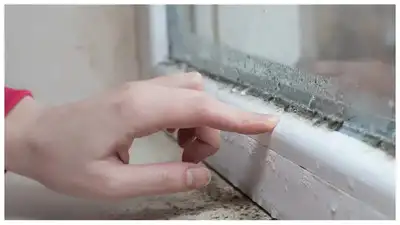Mold is a fungus that exists commonly in buildings because it thrives in moist environments, which frequently appear in bathrooms, kitchens and basements. However, the unnoticeable mold growth in buildings creates hidden dangers to human wellness, through different routes of exposure. Let’s find out more…What is mold and where does it growMold exists as a fungus which spreads through the air by releasing small spores. The mold spores that land on moist surfaces transform into colonies which produce black, green or white fuzzy or slimy growths. The main areas where mold grows inside homes include window frames, walls, shower areas and spaces under kitchen sinks. The survival of mold depends on moisture, so indoor mold growth occurs when water leaks, condensation forms, or when ventilation systems fail to work properly.Allergic reactions and skin irritation symptomsMost people develop allergic reactions and skin irritations after coming into contact with mold. The human body treats mold spores as foreign substances, which triggers allergic responses that cause symptoms such as sneezing, runny nose, itchy red eyes, coughing and wheezing. People who already have allergies and asthma experience more severe reactions after mold exposure. People without allergies can develop skin and eye and nose and throat discomfort after touching mold.Can lead to AsthmaThe presence of mold in a home environment causes asthma symptoms to worsen and increases the chances of asthma attacks for people who have this condition. The presence of mold spores in the airways triggers inflammation, which produces breathing problems and wheezing symptoms. Research shows that children who live in homes with mold growth have a higher risk of developing asthma and respiratory health issues. People with existing lung diseases and compromised immune systems become more vulnerable to mold-related infections.Toxic mold and mycotoxinsBlack mold (Stachybotrys chartarum) and additional mold species produce toxic substances known as mycotoxins. The combination of skin contact and breathing in these chemicals for extended periods, leads to toxic mold syndrome. People who develop toxic mold syndrome experience a combination of long-lasting fatigue, headaches, nausea, skin rashes and neurological symptoms including memory problems and mood swings. The human body’s nervous system and immune system experience damage, when people stay exposed to mycotoxins for long periods.Immune system impactThe human body becomes less able to fight off infections when it stays in contact with mold spores for an extended time. The combination of weakened immunity puts children, elderly people and patients with chronic diseases at higher risk for health complications. The human body creates inflammation as a response to mold exposure, which worsens current medical conditions and creates new sensitivities.

Mold and mental healthPeople who live in mold-contaminated environments can also develop mental health issues. Research shows that mold exposure causes people to experience higher anxiety levels, depression symptoms and cognitive problems which include memory loss and concentration issues. The combination of health problems and poor indoor air quality leads to additional mental health challenges for people dealing with these issues.

How to tackle moldMold-related health problems become preventable when you take steps to stop mold growth. The prevention of mold growth depends on controlling humidity below 50%, fixing leaks right away, and ensuring good ventilation in wet areas. The process of mold removal needs specific cleaning solutions together with disposal of materials, which cannot be salvaged. Professional mold removal services should be sought when mold growth exceeds large areas, or continues to exist after cleaning attempts. People with asthma, allergies and weakened immune systems must take additional safety measures whenever they experience any symptoms.










